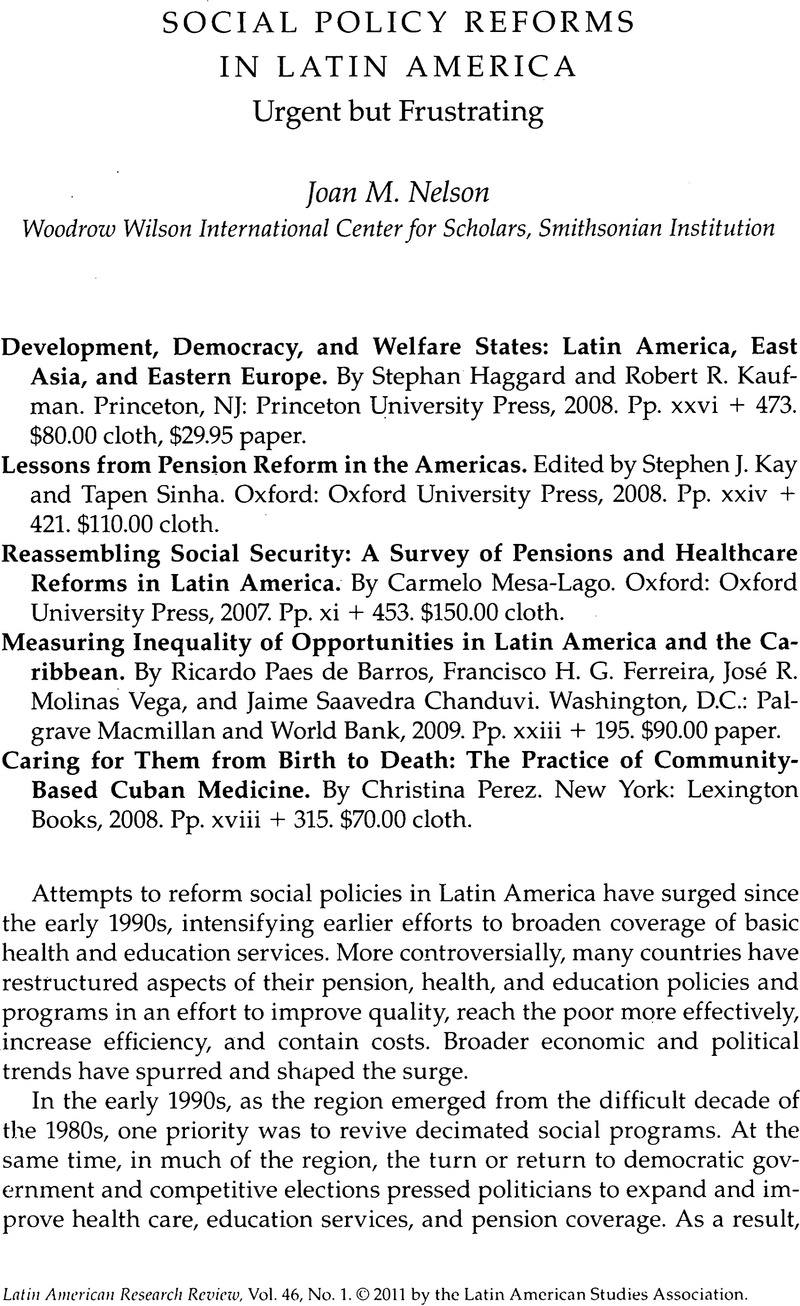Published online by Cambridge University Press: 05 September 2022

1. Michael Shifter, “Managing Disarray: The Search for a New Consensus,” in Which Way Latin America? Hemispheric Politics Meets Globalization, ed. Andrew F. Cooper and Jorge Heine (Tokyo: UN University Press, 2009), 55.
2. For a concise statement, see Commission on Macroeconomics and Health, Macroeconomics and Health: Investing in Health for Economic Development (Geneva: World Health Organization, 2001), 21–30.
3. Luis F. López-Calva and Nora Lustig, “The Recent Decline of Inequality in Latin America: Argentina, Brazil, Mexico and Peru” (paper presented at the Twentieth Economia Panel, Universidad Torcuato di Telia, Buenos Aires, Argentina, October 2, 2009).
4. Martin Carnoy, Amber Gove, and Jeffrey Marshall, Cuba's Academic Advantage: Why Students in Cuba Do Better in School (Stanford, CA: Stanford University Press, 2007).
5. Paul Tough, Whatever It Takes: Geoffrey Canada's Quest to Change Harlem and America (Boston: Houghton Mifflin, 2008), combines a detailed description of one such program and reviews much of the research underpinning the approach.
6. Mauricio Cárdenas, Vincenzo Di Maro, and Carolina Mejia, Understanding the Role of Education Perceptions and Victimization on Wellbeing (Washington, D.C.: Latin American Research Network and Inter-American Development Bank, 2008).